Since its initial release in 2014, the Mani phono preamp from Schiit Audio has gained a reputation as one of the best-sounding affordable options on the market.
Fast forward to the present day, and there’s a new kid in town, the Schiit Mani 2. The latest incarnation of this much-loved phono stage promises (in the words of Schiit Audio) to be “…simply the highest-performance affordable phono preamp, period.”
Can the Mani 2 deliver the goods?
Greater Levels of Control – Schiit Mani 2
On face value, the Schiit Mani 2 looks almost identical to the original. It retains the clean and simple front panel, featuring just the company logo and a power light, and the chassis is still just as compact, measuring just 5 inches wide, 3.5″ deep, and 1.25″ high.
As I’ve stated in many other phono preamp reviews lately, I’m always on the lookout for great-sounding compact vinyl gear, as space comes at somewhat of a premium in this household.
I recently reviewed the Moon 110LP v2, and the Mani 2 is the same width, but much smaller in depth and height.
Good news for compact listening spaces!
The back panel also remains unchanged, with the usual inputs and outputs, an earth terminal, and, a handy power toggle in the form of a nice sturdy rocker switch.
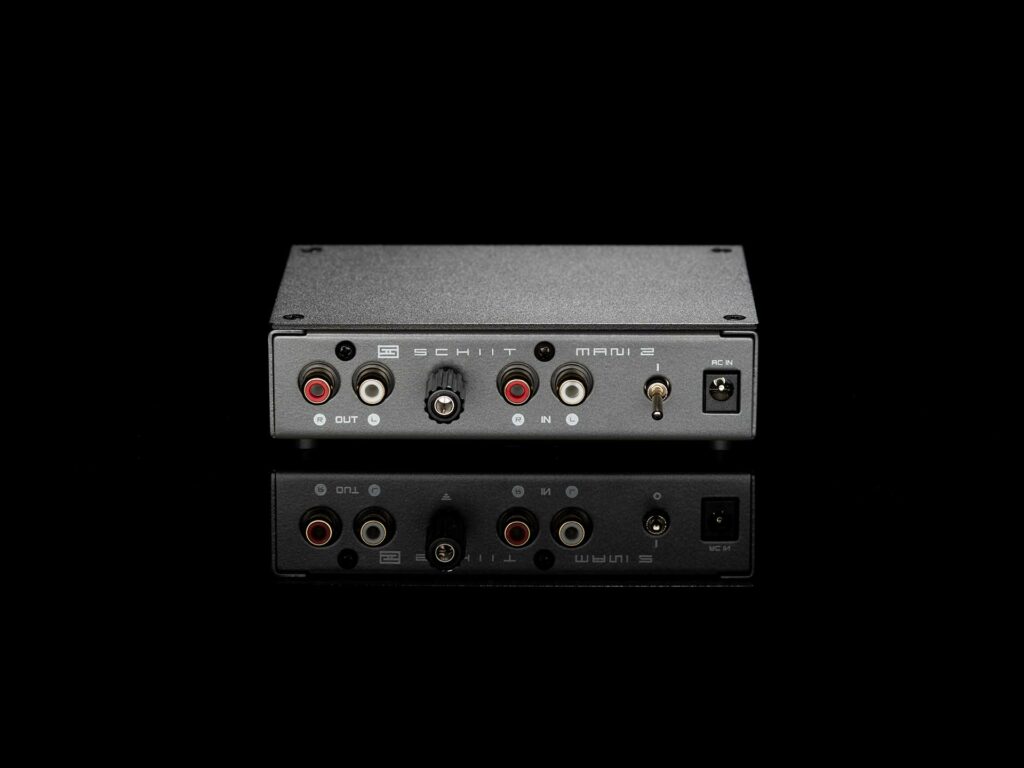
What’s is noticeably different are the dip-switch controls located underneath the unit, which give you much greater control over capacitance and loading compared with the original Mani 1.
Using various dip switch combinations, you can adjust the Mani 2 for impedance ranging 47KΩ, 200Ω, 47Ω, and 38Ω.
That’s significantly more control than the original Mani, which was adjustable between 47KΩ or 47Ω, and that’s your lot!
For capacitance, you can choose between 47pF, 100pF, 150pF, or 200pF.
Gain control remains fairly similar, allowing you to adjust between 33, 42, 48, or 60dB of gain.
A very welcome new addition is the inclusion of a sub-sonic filter, which offers 6dB or 12db of low-frequency filtering to help with any pesky and unwanted woofer movement.
No doubt the control on offer is impressive at this price point; my only slight criticism is with how confusing the controls are.
It took me a fair bit of time with the user manual to get my head around the controls. I got there in the end, and I do accept that this level of control is quite difficult to squeeze into such a small chassis.
The Mani 2 comes pre-set at 47pF (Pico Farad) and the standard 47kΩ to suit most common moving magnet cartridges. That said, my Ortofon 2M Blue cartridge actually calls for 100pF and 47kΩ, which is how I’ve always set it on my reference Pro-Ject Tube Box phono pre.
So, although Schiit Audio states that you can pull the Mani 2 right out of the box and simply plug and play for the vast majority of phono cartridges, I decided to make an adjustment to Ortofon’s stated optimal load.
I also tested the Mani 2 with an Ortofon Quintet Red moving coil cartridge, choosing at first to try 200Ω before comparing it with 47Ω. Having this option already makes the Mani 2 a more realistic MC phono stage than its predecessor.
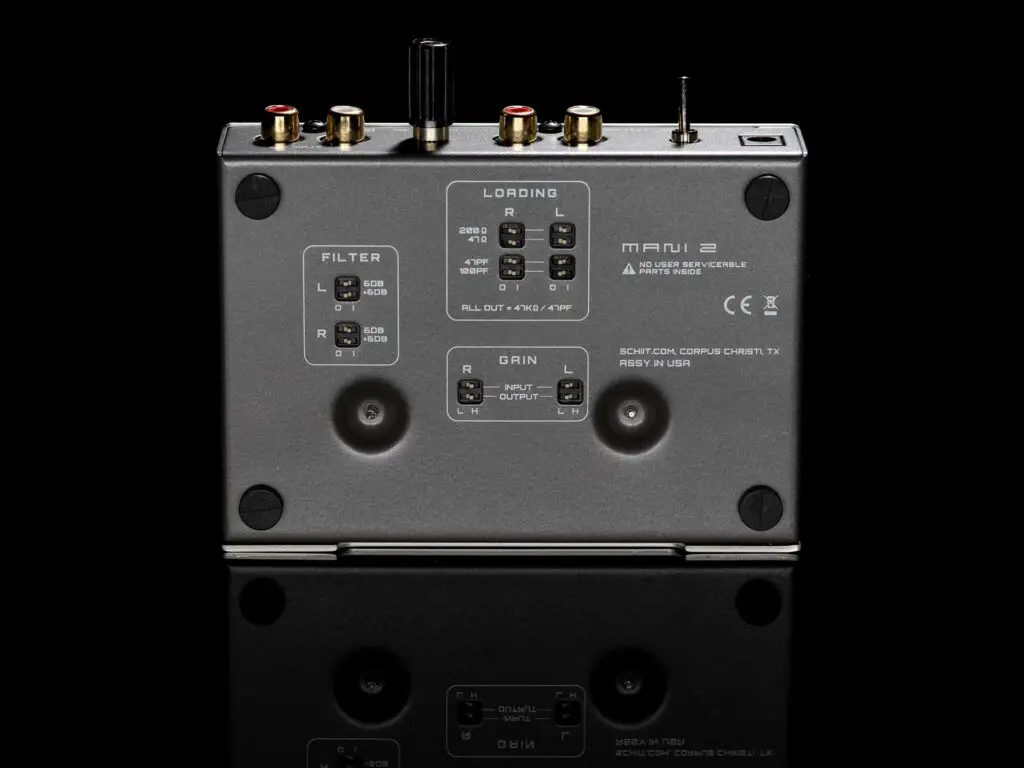
Getting the Placement Right
When setting up, I did notice that the Mani 2 was more picky about gear placement than some of the other phono preamps I’ve reviewed.
Schiit actually states in the manual that choosing the right location is critical. They stress the importance of keeping the Mani 2 away from any power transformers or the turntable motor.
Since my Pro-Ject Stereo Box DS2 has an external power transformer, I’ve always been able to get away with placing phono preamps directly on top of the amplifier.
In an ideal world, you should always strive for a good amount of space between HiFi components wherever possible to avoid noise. With the Mani 2, I found that I couldn’t have my LED turntable light switched on with the Mani so close and had to relocate the preamp to another location.
With a good amount of separation, though, the Mani is an exceptionally quiet phono stage.
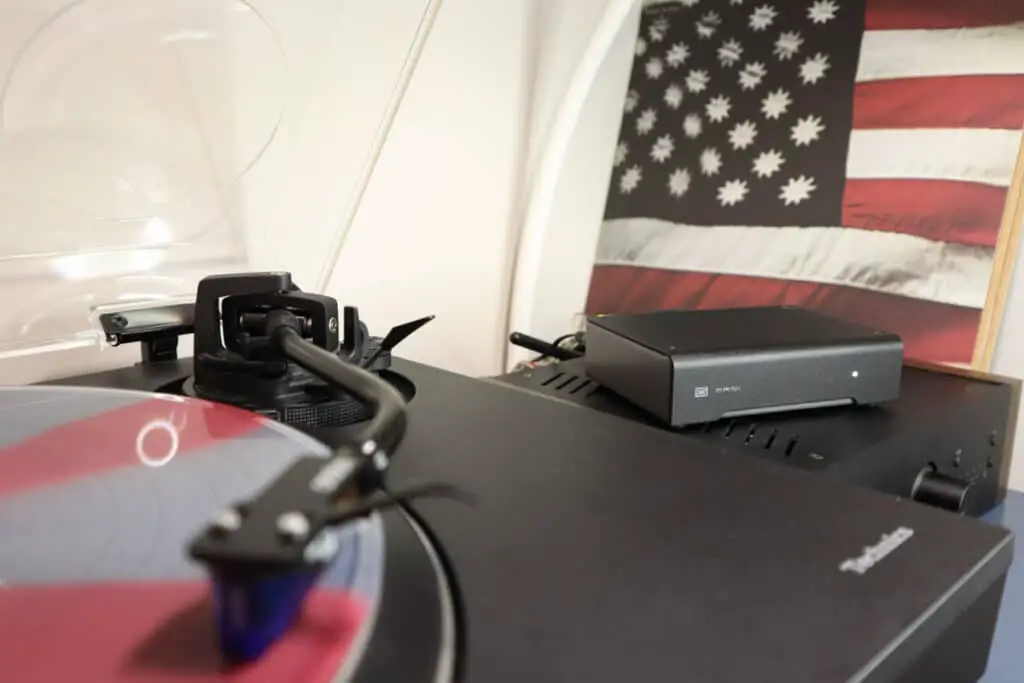
Schiit Mani Review: The Listening Test
For the listening test, I reached once again for The Meters Rejuvenation, which I’m currently liking as a test LP with its appealing mix of funk, soul, and rock.
I also picked out a copy of Sly & the Family Stone There’s a Riot Going On – both are recent AAA VMP reissues cut by Ryan Smith at Sterling Sound.
I compared the Mani 2 with the built-in phono stage on my Pro-Ject Stereo Box DS2 amplifier, and with the Moon 110LP v2.
Lastly, I also hooked up the Rega Fono Mini A2D MK2 for comparison as the Mani is priced quite similarly to Rega’s budget phono offering.
As an upgrade from the built-in phono preamp, both the Rega and the Mani are superb affordable upgrades, but the Mani definitely has the edge when it comes to excitement and dynamics. The Rega is very flat and neutral, whereas the Mani pushes the extremities further, and, to my ears, produces more light and shade to the sound.
Some of this is personal taste, but if you don’t need a USB output, and you prefer a little more zest to your sound, my money would back the Mani 2.
Compared with the built-in phono stage, the sound stage is significantly wider. The sound broadens so significantly that it immediately sounds closer to hearing a live band on stage. For an upgrade costing less than $200, the Mani 2 is a no-brainer if you’re still slumming it with a so-so built-in phono preamp.
On the last track of The Meters Rejuvenation (titled “Africa”), the Mani delivered a more solid and confident bass, increased agility and zest on the percussion parts, and greater clarity across the entire mid-range. Instrument separation became significantly clearer, and although it’s a bit of a cliché, it really is like a veil is lifted.
Comparing with the Moon 110LP v2 (a significantly more expensive phono stage, of course) I found the Moon to have a more confident handle and grip on the low-end and a smoother upper mid-range, but the differences are much more subtle than my built-in phono vs Mani 2 comparisons (at least with my setup).
When hooking the Mani 2 up with a moving coil cartridge (and Ortofon Quintet Red), I found the overall sound a little boomier in the low mids with less of a lively presentation of dynamics compared with more expensive phono stages.
But then again, the Mani 2 is a sub-$200 phono preamp, and with that important bit of context in mind, the Mani does a sound job. It’s always nice to have that upgrade path as an option.
The overwhelming majority of Mani 2 users will be operating a moving magnet cartridge. Still, at least the option is there without needing to buy an entirely new phono stage and cartridge in one big hit.
As Schiit comically state in the user manual, “For most turntables owned by actual mortals (that is, turntables that use a moving-magnet cartridge) start with the Mani 2 at the factory settings.” — that’s referring to the dip-switch arrangement, of course.
Schiit Mani 2 Review – The Bottom Line
The Schiit Mani 2 is one of the best phono preamps I’ve heard under $200. The most immediately noticeable change is how the sound stage opens up; in fact, the stereo imaging is really quite mind-blowing for a sub-$200 component upgrade.
The overall presentation isn’t quite as smooth as something like the Moon 110LP, but then again, the price difference is significant. Personal taste will play a big part in whether this becomes problematic for you; those who prefer a smoother, more balanced sonic quality may want to consider pairing the Mani 2 with a “warmer-sounding” phono cartridge.
In my cartridge arsenal, I could achieve this by pairing the Mani 2 with a Shure M97xe, which, compared to any of the Ortofon models, is considerably warmer sounding.
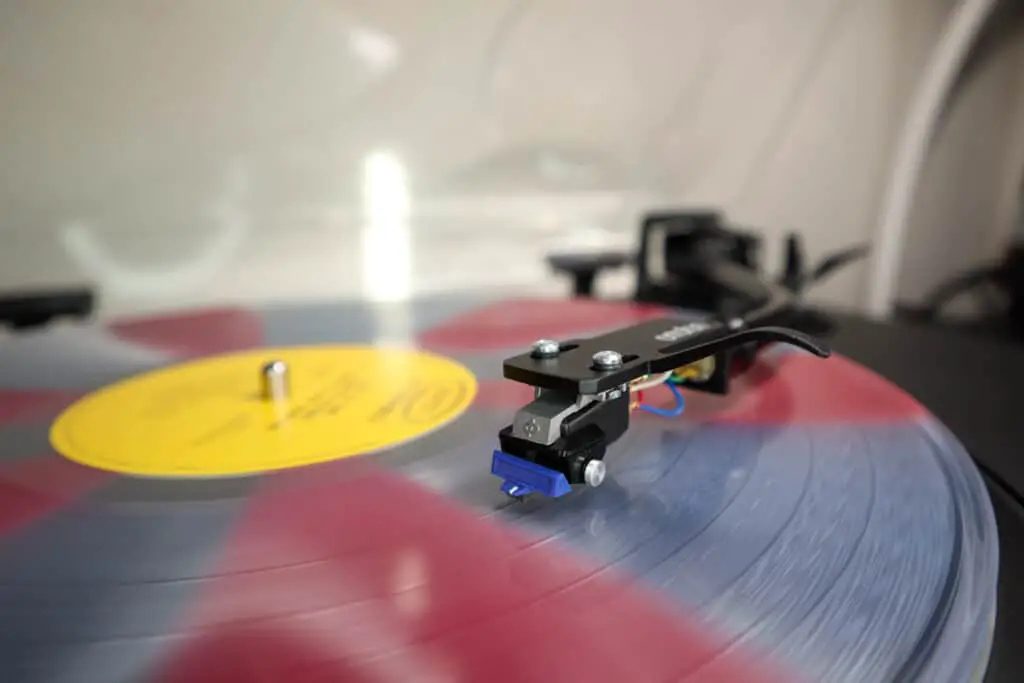
As with any HiFi system, it’s often a case of finding the best fit for your system and personal taste.
If you’re running a moving magnet cartridge and haven’t made the leap to a separate phono stage, it’s about time you got acquainted with the Schiit Mani 2. Buy with confidence; the Mani 2 deserves its reputation as one of the best budget phono preamps.
Is it, as Schiit Audio states, ” the highest-performance affordable phono preamp, period”. That’s a bold statement, but without a shadow of a doubt, the Mani 2 sets the standard at this price print.
VIEW PRODUCT ON AMAZON
Further Reading:
Best phono preamps at any budget






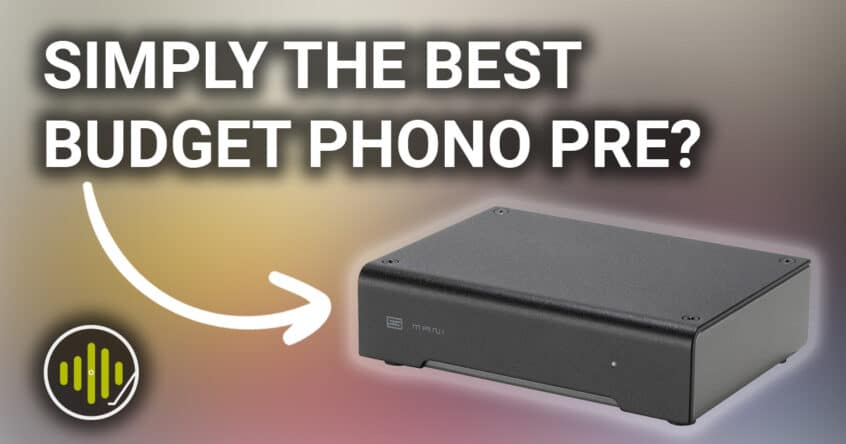


I see this review is a year old but I’ll give my question a shot anyway. Curious as to what gain setting you used with your Ortofon Blue. I found the preset too high for the Blue. Seemed to cause distortion. The lower (33db) worked well. But I also have an Ortofon Bronze that did not play well at either settings the 42 db preset was too high and the 33 db was too low. Actually sounded better with my Denon receivers photo stage. I think Shitt made the two settings too far apart. I
I use the Mani 2 with the Rega’s Ania MC cartridge. Is there any other option that can offer a significant upgrade with MC cartridges?
Ah, this sounds very close to what I need for my Ortofon 2m Blue on a U-Turn Orbit Custom turntable in the living room. I know you said it might not be “warm” sounding, but I can EQ that a touch if necessary. For the price, and the settings flexibility, it looks to be a winner. I might (later) go up the ladder to a Moon LP110 v2 after reading your review for it, for my living room (for that warmer sound) and move the Mani 2 in my den on an older Technics with a Grado Prestige Red 3 that already sounds a touch full in the midrange. Good review! Thanks.
Sounds like a plan, Ross! Glad the reviews are helping. The Moon is a nice smooth listen and will match your 2M Blue very well. The Mani 2 sounds like the perfect upgrade for your built-in U-Turn though, for sure. Happy spinning and thanks for commenting
Well it’s nice to know this really isn’t a Schitty preamp other than by name then…
Haha! 🙂
The capacitive load for a cartridge also includes the tonearm and cable capacitance. For my turntable, the tonearm has 120 pF and my 1 foot cable has 12.2 pF/ft. That’s 132 pF already. You probably have too much capacitance by using 100 pF for the Mani 2. Try using 47 pF and you may hear more open high frequencies.
Hey Dennis. I’ll give the 47pF a go and see how it sounds. Thanks for your additions and happy spinning!
I have one, and I completely agree with your conclusions.
I agree with this. Definitely better than the Yamaha Integrated amp phono input.
Great stuff Barry – glad to hear it’s working well for you. Happy spinning